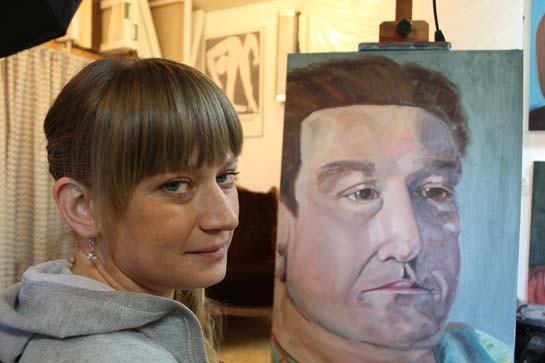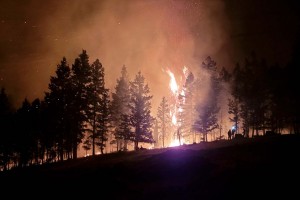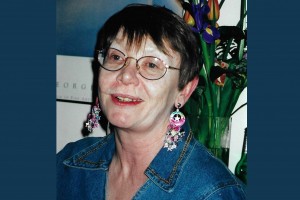They spend every working day taking care of us during our medical emergencies, but what happens to EMS (Emergency Medical Services) workers when they need help?
Teresa Coulter, an Emergency Medical Technician (EMT) with Calgary Metro EMS, describes what happened to her when she hit her crisis point.
"I wasn't handling the job, or my life in general. Everything was falling apart. I didn't know what to do about it," she says. "So I started isolating myself. I noticed I wasn't as fast at making decisions. Things like my driving were a struggle. I had a huge behavioural shift."
WHEN EVERYTHING FALLS APART
What brought her to this after 14 successful years in EMS?
"I had been struggling for a long time, but not really knowing what was happening to me." There wasn't much awareness or understanding of mental-health or acute-stress injuries at the time, she says, "so I was embarrassed to come forward."
She relates an analogy told to her by a colleague. "He said to me, after every bad call you go home, you roll up your dirty work sock, put it into a drawer and you close that door. And you do that over your career. Depending on how many bad calls you get, depending on how stressful the work environment is, that sock drawer can fill really fast. Eventually, there comes a point when it just won't close.
"And that's when everything spills over into your whole life, that stench, that dirtiness, that toxicity inside of you. You just can't hide from it anymore, you can't shut the drawer anymore."
Coulter's sock drawer overflowed after being called to an incident in which a child died. The call came at the end of a busy, 12-hour shift with no downtime.
"We did everything we possibly could do, we used all our skills and training to try to help that child survive. We handed off at the hospital and the child was pronounced dead."
She was off for the next four days, but the incident haunted her. "It was really hard. That call, I kept replaying it in my head. I ended up coming to work the next shift and I felt like I hadn't even had days off. I don't remember them. I just remember that call. My body felt physically like I was still there."
CHANGING BEHAVIOUR
Her behaviour started to change, she says. In the early days of her EMS career, she used to feel good about the successful calls, knowing her work had a positive impact on someone's life.
"I used to share those stories with my family members," she says. "But all of a sudden, all my stories started being bad stories. I would sit there and I would look at the faces of my family members — conversation stopped. I realized because of how toxic I was inside, I was inflicting that on my family. So I isolated. I shut down," says Coulter.
She stopped seeing family and friends. She stopped snowboarding, something she used to do a lot. "I just slowly started backing off, not going out. The only place I felt safe was in my house, in my room, in my bed," she says.
"I was irritable. I started having night terrors. I would have bad dreams," she says. "I felt like I was a zombie, just walking around banging into events and just reacting and then moving on to the next one."
A work colleague who had some training in Critical Incident Stress Management (CISM) noticed her change in behaviour and told her she needed help.
"It took an outside person to intervene and to say, 'there are things to help you, so let's do this process together.' I would never have been able to navigate this by myself," says Coulter.
She started to get professional counselling. She started to research and understand what was happening to her. She started to heal.
PAINTING HER WAY BACK TO HEALTH
As well as being an EMT, Coulter is also an artist, a painter — and that became an important part of the healing process for her and for other colleagues suffering from stress injuries, mental-health issues and Post-Traumatic Stress Disorder (PTSD).
While she was going through her stress-related issues, she also suffered an arm injury, which required her to be be off work for about four months.
"During that time I painted a lot. After about three months, my body finally started to come down. I didn't feel like I was in fight-or-flight mode. I was sleeping better, I was starting to interact with family members. I was starting to come clear again," she says.
"I went back to work and I started noticing other people with the exact same stress symptoms as I had, either through their talk or through their body language."
This signalled the birth of an ambitious art project.
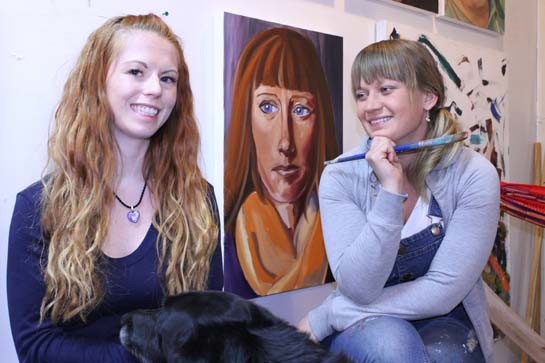
Paramedic Naomi Teevens (left) prepares to pose for Teresa Coulter, in front of one of Coulter’s earlier portraits. PHOTOGRAPH: TERRY INIGO-JONES
Coulter decided she wanted to paint portraits of paramedics who have suffered from PTSD, stress and mental-health injuries. She wanted to show the people behind the uniforms and to give them a safe place to tell their stories.
If paramedics everywhere start to see that others have suffered, that others have come forward to talk about their struggles, they will know they're not alone, she says.
"The endgame is just awareness," says Coulter, who hopes her portraits will be seen in galleries, and used for a calendar. "I want the stigma to be removed that it's 'just people going crazy.' It's an injury, a true injury and should be treated exactly like a back injury."
She is now working on her 12th portrait, this one of paramedic Naomi Teevens, who has worked in Calgary's EMS for six years.
"In November, a series of events led me to book off on stress leave," says Teevens, "but my actual stress injury was from almost 14 months prior to that." For months she didn't sleep well. Her problems manifested in other ways, as well. Still, she didn't recognize what was happening to her.
"It took a long time for me to finally realize what it was and to ask for help. I was off work for two-and-a-half months before I finally started being able to say: 'You know what? I'm not OK and I want help.' Teresa has been an amazing friend to have through this."
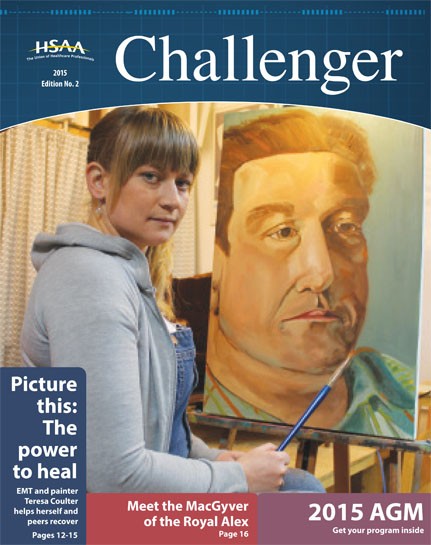
This article was first published in Challenger, (Edition No.2, 2015), the Health Sciences Association of Alberta's (HSAA) magazine. It is republished here with the author's permission.
A lot of great articles and commentaries cross Our Times' editorial desks from the internal union press in Canada, and we figure they deserve a wider, public audience, as a way to build the movement for workers' rights and social justice. That's why we've launched our new online series, Best of the Union Press.
This second instalment is from the Health Sciences Association of Alberta. "Healing Power" won this year's Ed Finn Award for best feature story (staff produced), presented by the Canadian Association of Labour Media. If you have a suggestion for what we might post next, please email us, attention: Best of the Union Press.
Terry Inigo-Jones is a communications officer with the Health Sciences Association of Alberta.


